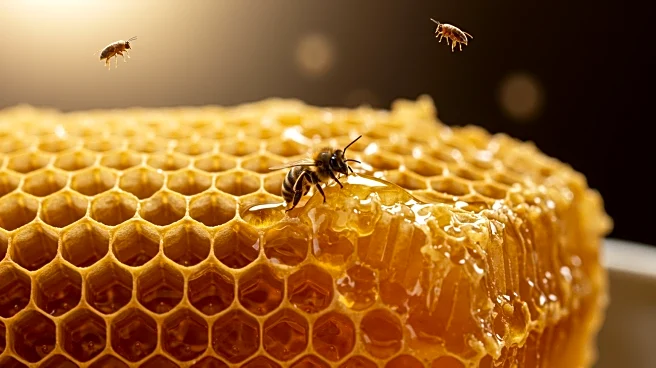Rapid Read • 8 min read
A recent study has examined the ecological niche dynamics of two invasive dinoflagellate species, Ceratium furcoides and Ceratium hirundinella, in non-native environments. The research highlights how these species adapt to new ecological conditions, with C. furcoides showing significant niche expansion and C. hirundinella demonstrating niche conservatism. The study suggests that C. furcoides is more likely to invade new areas due to its ability to thrive in diverse environmental conditions, while C. hirundinella remains stable within its established niche. These findings are crucial for understanding the invasion processes of microorganisms, particularly phytoplankton, which have been underrepresented in ecological studies.
AD
The study's findings have significant implications for managing invasive species and protecting ecosystems. Understanding the niche dynamics of these dinoflagellates can help predict future invasion risks and inform strategies to mitigate their impact on local biodiversity. The ability of C. furcoides to adapt to various environments suggests it could pose a greater threat to ecosystems, potentially leading to harmful algal blooms and affecting aquatic life. Conversely, the stability of C. hirundinella's niche may offer insights into controlling its spread. These insights are vital for developing effective ecological management practices and enhancing predictive models for invasive species distribution.
Further research is needed to explore the ecological interactions and environmental factors influencing the establishment and bloom dynamics of these dinoflagellates. Long-term monitoring programs could provide valuable data on how environmental changes affect their invasion success. Additionally, developing physiologically explicit models and conducting experimental studies may help validate hypotheses regarding niche dynamics and improve risk assessments. Understanding these processes will be crucial for managing invasions and protecting ecosystems from the potential impacts of these species.
The study suggests that dinoflagellate invasions may involve complex ecological and evolutionary mechanisms, requiring adaptive, region-specific approaches for risk assessments. The contrasting niche dynamics observed between native and introduced ranges indicate an ecological 'divide and conquer' strategy, potentially reducing competition and facilitating parallel establishment. This perspective highlights the need for a deeper understanding of eco-evolutionary dynamics in invasion processes.
AD
More Stories You Might Enjoy










